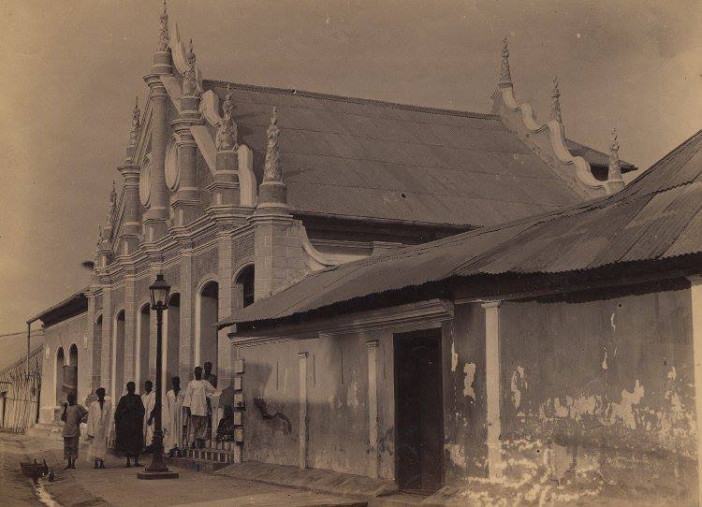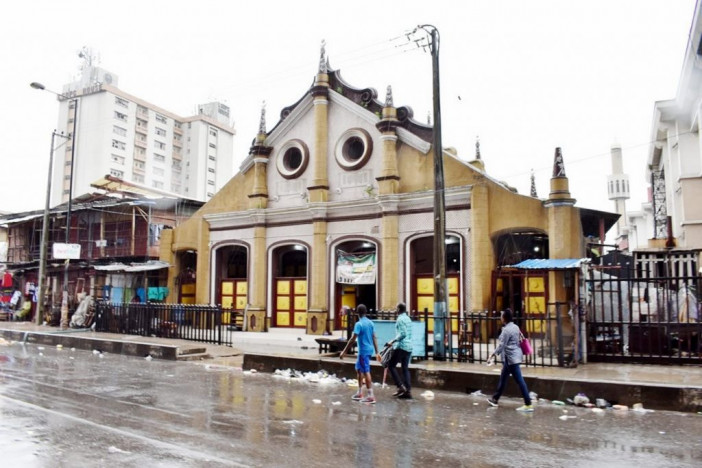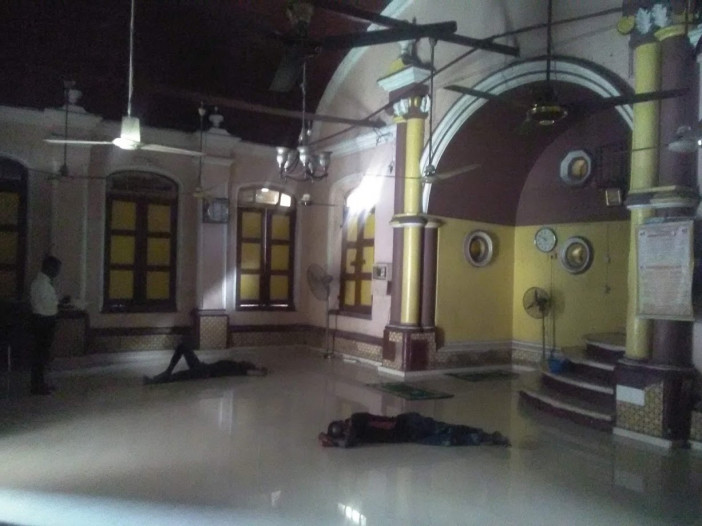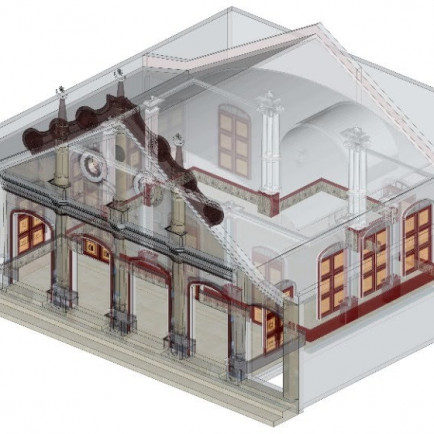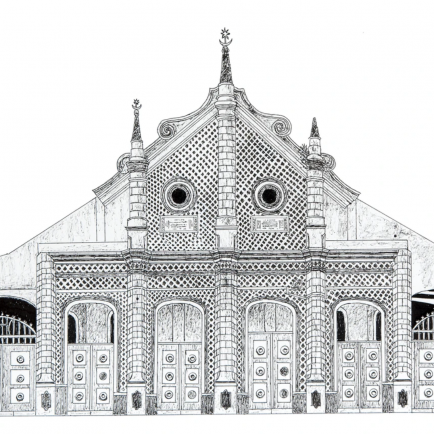Shitta-Bey Mosque
History
Mohammed Shitta Bey, a merchant and philanthropist who was born in Sierra Leone to Yoruba parents, funded the mosque's construction beginning in 1891. The building was constructed using tilework that portrayed Afro-Brazilian architecture, under the direction of Brazilian architect João Baptista da Costa. On July 4, 1894, the Shitta-Bey Mosque was dedicated at a ceremony officiated by Sir Gilbert Carter, the Lagos governor.
Urban and Architectural
a squar plan mosque with Brazilian Baroque influence in the facade. The brick façade with ceramic cladding is divided by stone pillars, and the vault above is covered with a gable roof.
Description
The Shitta Mosque was constructed in the Brazilian architectural style and features a traceried canopy as well as pinnacles with floral decorations reminiscent of Taiwo Olowo's monument. The pattern is still there, at least in the former Ahmadiyya Central Mosque in a degraded form.
References
https://cialagos.org/portfolio/conservation-2/
https://en.wikipedia.org/wiki/Shitta-Bey_Mosque
https://mavcor.yale.edu/material-objects/shitta-bey-mosque
Details
Location
Martin St, Lagos Island 102273, Lagos, Nigeria
Worshippers
200
Owners
Mohammed Shitta Bey
Architect Name
Year of Build
1894
Area
400
Drawings
Map
History
Mohammed Shitta Bey, a merchant and philanthropist who was born in Sierra Leone to Yoruba parents, funded the mosque's construction beginning in 1891. The building was constructed using tilework that portrayed Afro-Brazilian architecture, under the direction of Brazilian architect João Baptista da Costa. On July 4, 1894, the Shitta-Bey Mosque was dedicated at a ceremony officiated by Sir Gilbert Carter, the Lagos governor.
Urban and Architectural
a squar plan mosque with Brazilian Baroque influence in the facade. The brick façade with ceramic cladding is divided by stone pillars, and the vault above is covered with a gable roof.
Description
The Shitta Mosque was constructed in the Brazilian architectural style and features a traceried canopy as well as pinnacles with floral decorations reminiscent of Taiwo Olowo's monument. The pattern is still there, at least in the former Ahmadiyya Central Mosque in a degraded form.


